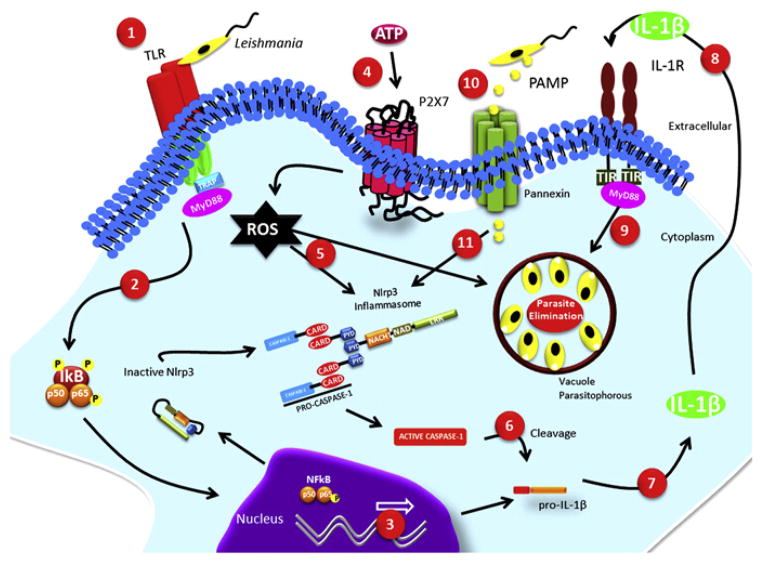Fig. 1.
Schematic overview of intracellular parasite elimination following ATP ligation of P2X7. (1) The presence of the parasite triggers a signaling cascade by members of the Toll-like receptor (TLR) family, (2) dephosphorylation of IκB allows NFκB translocation to the nucleous, (3) and expression of genes such as pro-IL-1β. (4) Ligation of P2X7 by extracellular ATP induces ROS production, (5) which can either directly stimulate parasite elimination or activate the NLRP3 inflammasome. (6) Activated caspase-1 cleaves pro-IL-1β, (7) generating the biologically active IL-1β, (8) which acts on its receptor and (9) contributes to the elimination of the parasites. (10) Additionally, PAMPs from parasites can enter the cell through the pannexin pores activated by extracellular ATP, (11) which in turn can also activate the NLRP3 inflammasome.

